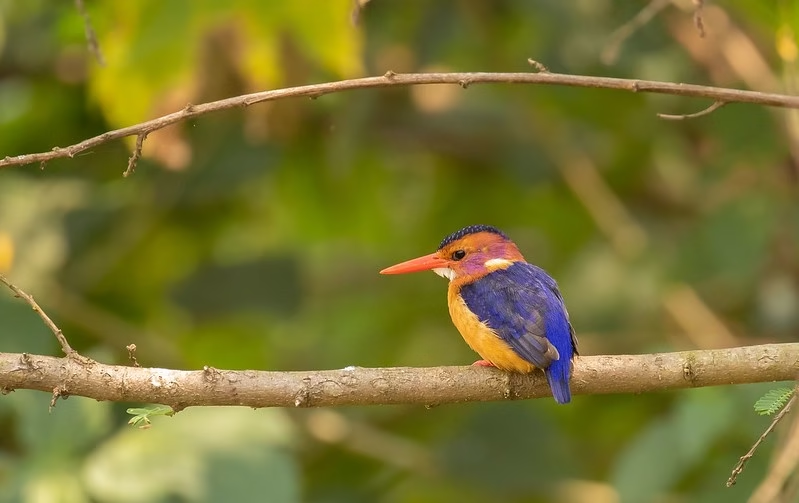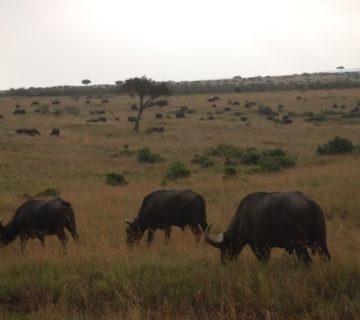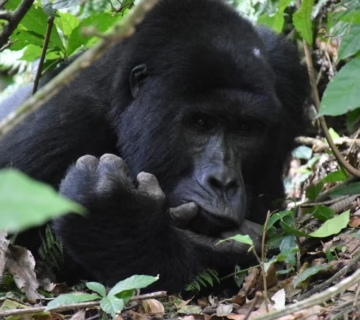Top 10 birds in Bwindi.
The top ten birds in Bwindi: One of Uganda’s largest natural forests is Bwindi Impenetrable Forest National Park. It is situated in Kanungu district, on the edge of the Albertine Rift, in the southwest of the nation, which is Uganda’s boundary with the Democratic Republic of the Congo. The Virunga mountains are around 25 kilometers north of the park.
The main reason people go to Bwindi is to see the mountain gorillas. Bwindi is more than simply the gorillas, however. First, the Batwa, an indigenous tribe that today serves as tour guides and offers cultural experiences to tourists, lived in the jungle.
With more than 150 different tree and fern species, the impenetrable forest is renowned for its biodiversity. In addition, it is home to 348 bird species, over 220 butterfly species, 27 frog species, and 120 mammals, including elephants, antelope species, and other primates like baboons. The top ten birds in Bwindi include the chapin’s flycatcher, Shelley’s crimsonwing, and grauer’s broadbill, among other species that are internationally threatened.
The Doherty’s bushstrike, Rwenzori nightjar, blackbilled turaco, black bee eater, montane oriole, beautiful francoline, kivu ground thrush, and royal sunbird are some of the other notable birds in Bwindi.
The majestic sunbird
Cinnyris regius, often known as the royal sunbird, is typically tiny, measuring just 11.5 cm. The male has black wings, scarlet and yellow breasts, and golden green top portions. The female, meanwhile, has a reddish underbody and bland top portions. Nesting in the center of bushes and tree branches, they breed between November and January. This bird is located in the eastern region of Bwindi Forest, in the Ruhija sector.
Kivu ground thrush
The fore-crown of this bird is orange. It may be found in Bwindi along the waterfall path and Buhoma gate, and it inhabits elevations between 1500 and 2800 meters above sea level. Due of its high decibel level, the Kivu ground thrush is more likely to be seen in the morning. It may also be seen eating in the afternoon or evening along the route.
Crimsonwing Kivu ground thrush Shelley’s
The current estimated population of this fragile bird species ranges between 2500 to 9999 birds. Despite being around for more than a century, nothing is known about the behavior or reproduction of the shelley’s crimsonwing. The male’s wings and tail are black, while its face, crown, and back are all brilliant red. The female has a crimson torso and an olive head. It may be identified by the sound “tit tit tit.”
Eater of black bees
From a distance, the black bee eater, or Merops gularis, seems completely black. But it is essentially a black bird with a vivid red neck and a blue belly. The bird is typically shy and may reach a height of 20 cm. They are more difficult to locate in the forest than other bird species, which is a reflection of their timidity. They may be identified by the “ji-lip” sound, which is often unheard. The Buhoma area of Bwindi Impenetrable National Park is often home to the black bee eater.
Nightjar in Rwenzori
The C.p. Rwenzori is another name for this bird, which belongs to the montane nightjar subspecies. The bird is fairly dark, reaching a maximum length of 23 cm, and it has a blackish hue. The female’s tail is less white than the male’s, which bears white dots on its four major segments. Nightjars are nocturnal birds that mostly eat moths, as their name would imply. Between 1000 and 3350 meters above sea level is where they may be found. The Ruhija area of Bwindi is home to it, making it one of the Top 10 birds in Bwindi.
Turaco with a black bill.
As the name implies, the black billed turaco has a black bill. Aside from the black bill, it looks a lot like the South African Knysna turaco. It is around 40–42 cm long, heavy, and long-tailed. The male and female share incubation responsibilities after the bird deposits two eggs on a stick platform three to five meters above the ground. The Kwah khaw kwah sound is used to identify the black-billed turaco, which is located in the Buhoma area.
The broadbill of Grauer
One of the rarest birds in Bwindi is the African green broadbill, as it is sometimes called. It inhabits Bwindi at elevations between 2100 and 2200 meters above sea level. The bird has a blue neck, a short beak, and is brilliant green. Additionally, the elder ones have very thin black eyestripes. Typically, the green broadbill feeds on fruit, seeds, flowers, flowerbuds, and invertebrates.
Oriole Montane
Tropical woods like Bwindi are the natural habitat of this little and kind bird. But they’ve done a great job adapting to parks, backyards, streets, and more. In particular, they consume berries in the summer and autumn, but they also consume fruits and vertebrates. The montane oriole mostly builds its nests in tall poplars, willows, and cottonwoods.
The bushshrike of Doherty
One of the most colorful birds to have ever seen the world is the Doherty’s bushshrike, which has a green bush shrike, a large black breast, a lemon-yellow belly, a black tail, and a vivid red forehead. Despite its color, the bird prefers to be timid, which makes it seem skulking—one of the Top 10 birds in Bwindi. They are reported to reside in the deep forest undergrowth at elevations ranging from 1500 to 3350 meters, and their breeding season in Bwindi, Uganda, takes place from May to June.


